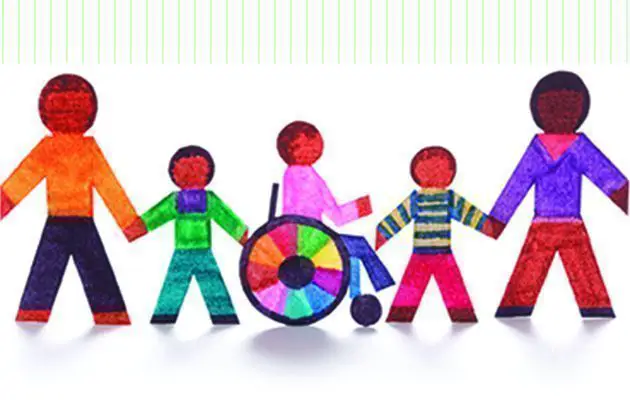Your child has challenging symptoms, but no diagnosis. That means no official services, and plenty of frustrations. You know your child is different, yet it would be so much easier to deal with the difference if there was a label attached. Here’s help.
What happens when your child is struggling but doesn’t have a diagnosis? It’s so much easier for parents to explain their child to a school, doctor, or coach when there’s a label to go with the behavior: “She has ADHD, please cut her some slack,” or, “He’s on the autism spectrum, please help him make friends.”
But what about the child who doesn’t make the cut?
Take Carly, a cute 8-year-old redhead with a gap in her front teeth and a perpetual grin. Her mother brings her in to be tested because she simply is having a hard time in second grade, but a full evaluation reveals that she does not meet the criteria for any disorder. She doesn’t have ADHD or organization problems, and she is not lagging academically. But one thing stands out: Carly is annoying. She talks a lot, laughs too loudly, and is bossy. She’s driving her classmates, teachers, parents, and everyone else crazy.
And then there is Max. Max has an IQ of 82, in the “low average” range. He is slower than most of his classmates, and is also very immature. His peers are starting to outpace him socially. By age 10, Max is an outcast. He does not meet the criteria for intellectually challenged and he has managed to learn his academic skills with a lot of tutoring, so he is not eligible for any services. Max is not different enough.
Or Maria. Maria is a 6-year-old firecracker. She has tons of energy, is difficult to engage, and is only happy when she’s moving. An exceptionally intense child, Maria is a voracious learner but falls apart when she doesn’t get her way. Intense? Active? Emotional? Absolutely. Diagnosis? None.
Carly, Max, and Maria are what I call “in-betweeners”—kids with challenging symptoms that don’t meet criteria for a specific diagnosis. Annoying to be around or slower to learn or intense and active, these are types of kids who are challenging to raise and even harder to teach, but don’t meet diagnostic criteria, so they don’t get a label.
Some experts call this phenomenon “shadow syndrome,” as in a mild form of a specific diagnosis…but not quite. I prefer, however, to see these children as in-betweeners because it’s a positive term, unlike the slightly diabolical sounding shadow syndrome. In-betweeners are kids who don’t quite fit in. Their parents have a special set of needs, too.
Why Is No Label Sometimes Harder Than a Diagnosis?
When a child is atypical but does not meet a diagnosis, the parents can feel isolated and at a loss. You know your child is different, and you’re relieved that there is nothing more serious going on, yet it would be so much easier to deal with the difference if there was a label attached. Why?
Labels lead to services. When your child is diagnosed with a specific disorder, there is usually a designated list of services they are entitled to, either through the school district, a regional center, or through a private-pay system.
Labels lead to awareness. For example, when your child is on the autism spectrum, you can educate yourself about the disorder. There are websites, books, support groups, and specialists at your disposal. Having a diagnosis can also help a denying parent be more accepting about his or her child.
Labels lead to understanding from others. Most people now know that having a diagnosis such as dyslexia, ADHD, autism, or processing disorders doesn’t mean that there is something wrong with your family. These are neurodevelopmental disorders that a child is born with.
In-betweeners and their parents do not have these advantages. Instead, they are subjected to head-shaking and judgment from others who think, “What is up with that kid!” or “These children are just not being parented right.” As if parents needed more stress!
And with no diagnosis, parents tend to blame each other or themselves for their children’s problems. What the heck is wrong with this kid? Can’t you discipline him better? We threw out all this money on testing and they didn’t find anything! It must be our fault—probably yours.
Help For Children with No Official Diagnosis and Their Parents
Please be patient with me—God hasn’t finished making me yet. Remember that saying? It’s a good mantra for your in-betweener, who may outgrow his or her difference.
With early intervention, a child can outgrow a diagnosis but retain some aspect of the condition. For example, a child with early sensory integration disorder may continue to refrain from walking barefoot in sand and flinch at hugs but otherwise be able to socialize with few problems. A child with an early speech disorder may develop into an excellent speaker but still struggle with spelling (there is a strong link between expressive language and learning to read and spell). The same is true for in-betweeners—with help, they often can overcome many of their challenges.
On the other hand, some kids grow into diagnoses as they develop. A child who just seems to be working a little too hard on mastering letter sounds can certainly develop a reading delay by later elementary school. A child who is just a bit eccentric can look more than a little different by a later age.
In the meantime, there are steps parents can take and advice they can tap. Determine the diagnosis that most closely resembles your child’s behavior, and use those resources. Diagnoses are not exact, anyway—there is no blood test that correctly diagnoses psychological issues. So based on your own observations, find out what help is available.
Is your child super-energetic? Can’t seem to stop?
Check out ADHD, hyperactive impulsive type. Your child may not meet criteria but the same tactics may help change his or her behavior. Make sure your child is getting a high-protein, low-carb, low-sugar diet. Eliminate junk food and artificial coloring. This child also needs a strong cardiovascular workout daily. Limit screen time and increase active play. Mindfulness techniques or yoga can also be helpful. Join the fun and learn new techniques and diet along with your child.
Learning problems but not learning delayed?
Help your child stay on top of his or her academics with enough support. There is no substitute for early intervention; find an educational therapist from the national Association of Educational Therapists or at NYSpecialParent.com, and you can prevent a small problem from becoming an overwhelming problem later on. Sometimes a retired schoolteacher or a tutor in your neighborhood can be helpful.
Socially annoying but not on the autism spectrum?
Your child will still benefit from social skills training and social stories. Social skills training is available in many areas through the school system or privately through therapists or speech therapists. Social stories teach social cues and help children to better learn nuances of social communication, often through pictures describing a situation, skill, or concept in very specific detail. Some children will benefit from speech therapy if their pragmatic language seems off, even if there is no specific language disability.
And, so many parents can benefit from the counsel of a therapist, support group, or taking their child for a few sessions of family therapy. Don’t forget to help yourself through the process of raising an atypical child.





















